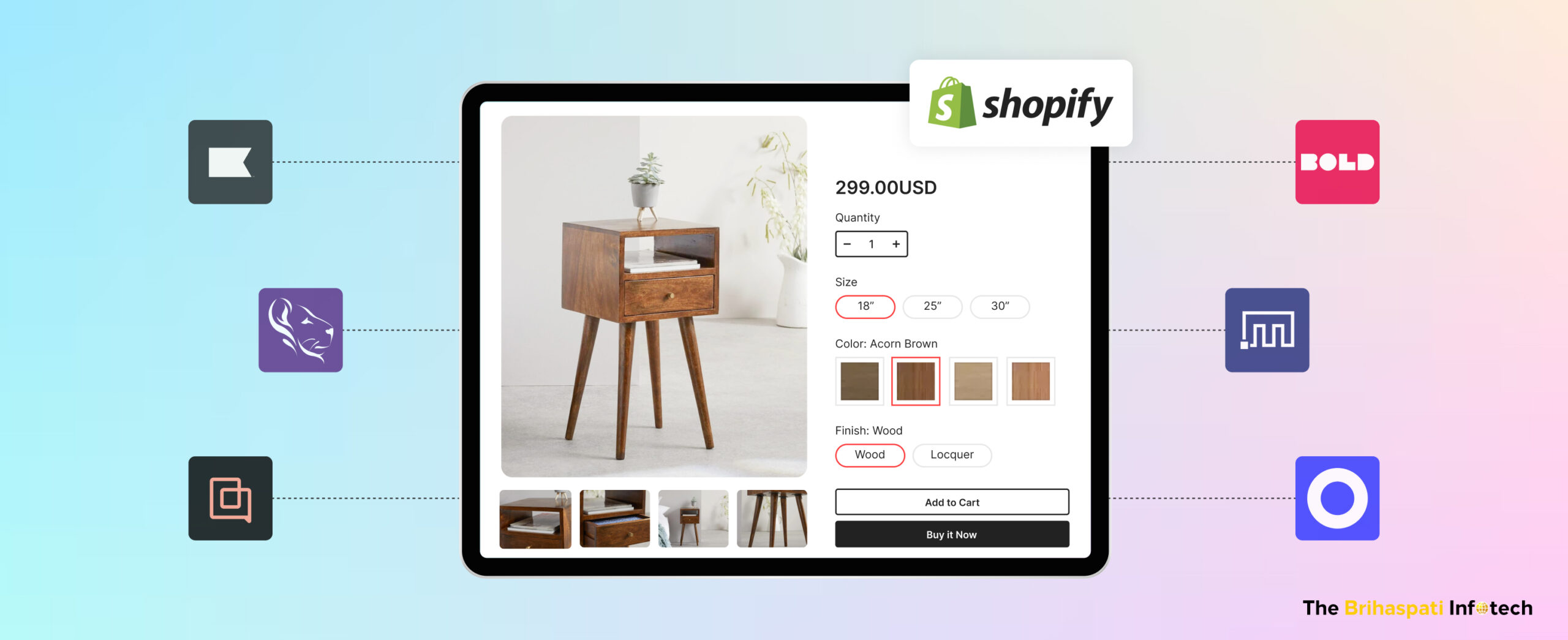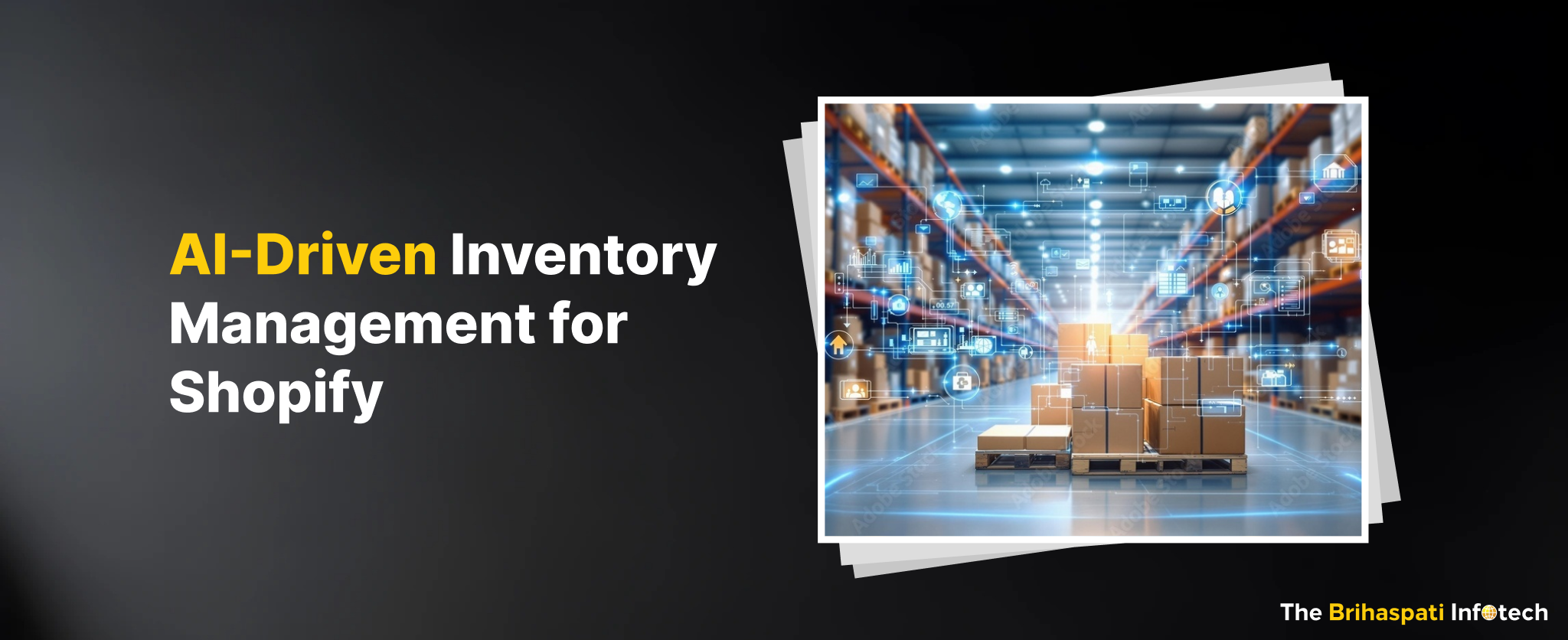
Shopify AI Integration for Automated Inventory Management
AI inventory management is transforming how Shopify merchants tackle one of their biggest challenges: balancing stock levels. Overstocking ties up capital and increases storage costs, while understocking leads to missed sales and unhappy customers. Shopify AI integration addresses this challenge by providing data-driven automation for optimized inventory control.
In this blog, we will explore how our AI integration services enhance inventory management and ecommerce operations. Let’s take a closer look!
Project Overview: AI Inventory Management in Shopify
At TBI, our Shopify development services experts built an AI-powered inventory management app that enables merchants to make data-driven decisions by forecasting demand, automating stock updates, and reducing the risk of stockouts. The app comes with the following key capabilities:
- Real-time Data Sync: Seamlessly connects with Shopify stores to collect live product, sales, and stock data.
- Sales Forecasting with Machine Learning: Integrates with advanced machine learning models to predict demand and prevent stockouts.
- Merchant-Friendly Dashboard: Provides actionable insights, alerts, and reports through an intuitive and interactive UI.
With our expertise in machine learning development services, we help ecommerce businesses move from reactive inventory decisions to proactive, profit-driven strategies.
Why Shopify Merchants Need AI Inventory Management?
With U.S. retail inventory accuracy at just 63%, businesses risk stockouts and overstocking. AI-driven inventory management helps Shopify merchants automate stock control, reduce errors, and maximize sales efficiency.
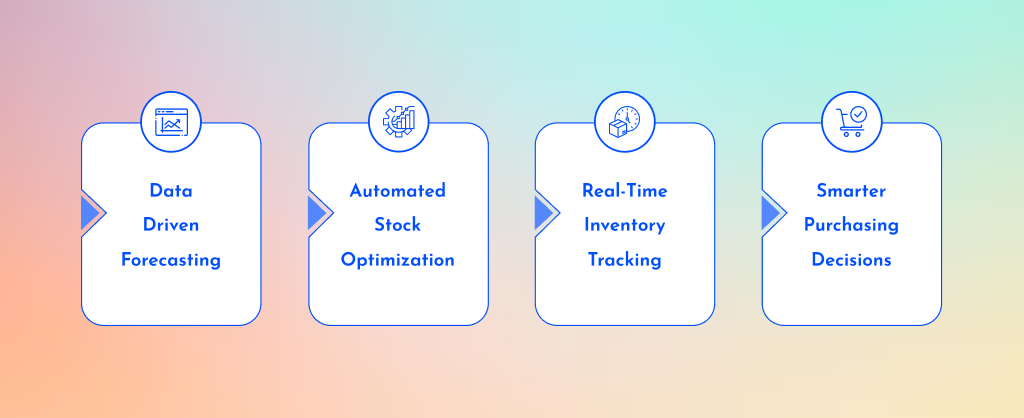
- Data-driven forecasting enables Shopify merchants to predict demand accurately using AI-powered analysis of historical sales, trends, and market patterns.
- Automated Stock Optimization streamlines inventory replenishment by balancing supply with demand, and minimizing excess stock and stockouts for better profitability.
- Real-time inventory Tracking provides instant visibility into stock levels across multiple locations, reducing errors and preventing overselling or stockouts.
- Smarter Purchasing Decisions leverage AI-driven insights to optimize procurement, ensuring timely restocking while minimizing costs and excess inventory.
How We Built an AI-Powered Shopify Inventory Management App: Our Case Study
At The Brihaspati Infotech, our team followed a structured approach for developing an AI-powered inventory management app for Shopify, focusing on seamless integration, precise forecasting, and an intuitive user experience. We created an app that leverages AI inventory management to connect Shopify merchants with advanced machine-learning models for real-time sales predictions and stock optimization.
In this section, we break down our development process into key steps, highlighting how we built the Shopify AI app, integrated it with machine learning systems, and delivered accurate demand forecasting.
1. Building the Shopify App
We built a Shopify AI app that automates stock management and provides inventory forecasting with clear, actionable insights.
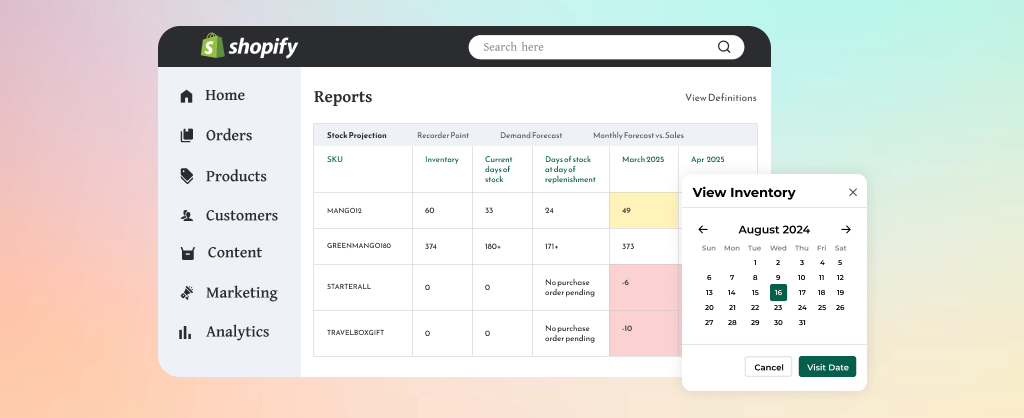
How We Implemented:
- Shopify Integration: Connected the app with Shopify’s API to fetch real-time product and sales data.
- Automated Data Syncing: Ensured continuous data flow between the Shopify store and the ML system without manual intervention, leveraging the Celery task queues system and Redis for scalable processing.
- Intuitive User Interface: Designed a user-friendly dashboard to display forecasted inventory data, stock alerts, and safety stock recommendations, with customizable filters based on merchant feedback.
- Secure Payment Handling: Integrated Shopify Billing API to manage subscription-based access for merchants.
2. Collecting and Sending Shopify Data to the ML System via API
To ensure accurate forecasting, our app efficiently collects and transmits Shopify store data to the machine learning (ML) system for processing.
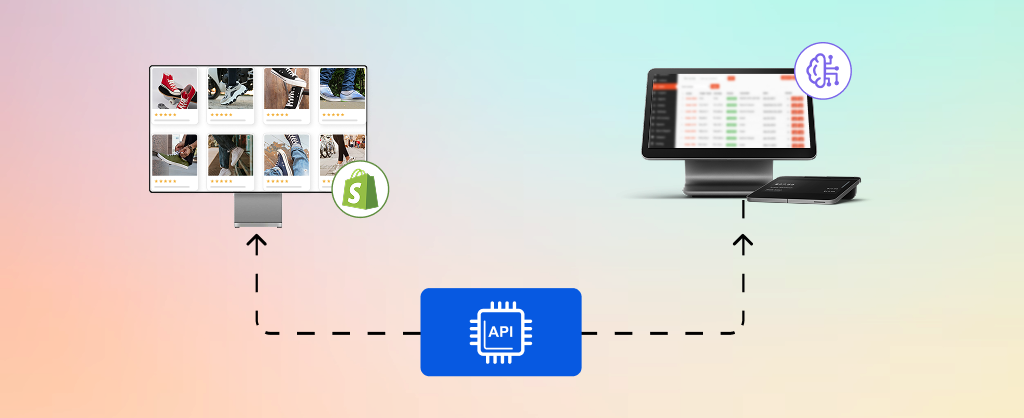
How We Implemented:
- Automated Data Extraction: Pulled historical sales, product details, and stock levels from Shopify using API calls, handling large datasets efficiently.
- Data Standardization: Processed and formatted raw data, with error handling to manage inconsistencies, and logging issues to PostgreSQL for reliability.
- Secure API Communication: Established encrypted API connections with GDPR compliance to transmit data securely and in real time.
3. Processing Data with Machine Learning Models
The ML system analyzes past sales patterns and external factors to predict future demand, helping merchants make informed inventory decisions.
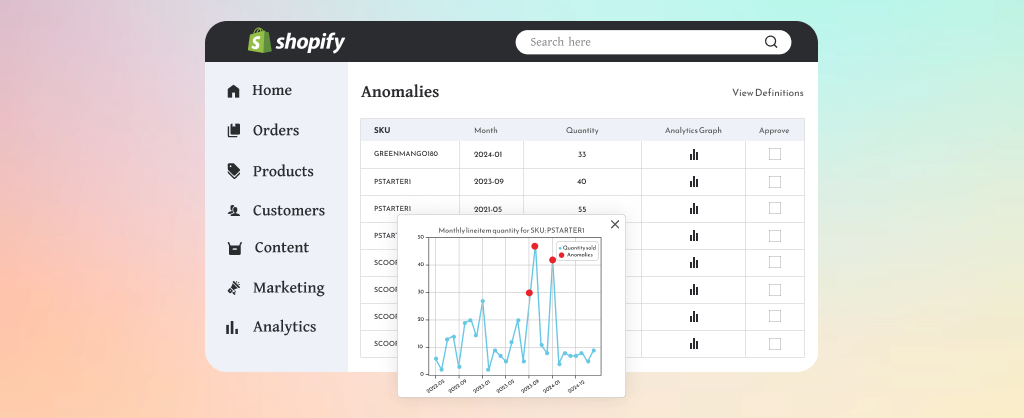
How We Implemented:
- Data Preprocessing: Filtered and structured historical sales data using Python libraries such as Pandas and TimeSeries for training machine learning models.
- Trend Analysis: Factored in seasonal trends, demand shifts, and historical patterns using ARIMA, Exponential Smoothing, and XG Boost models from the Darts library.
- Continuous Model Training: The system refines predictions over time by learning from new sales data, validated to achieve a Mean Absolute Error Percentage (MAE%) below 10%.
- Custom API Endpoints: Created dedicated endpoints to generate precise sales forecasts for each merchant, with anomaly detection to flag unusual sales patterns.
4. Retrieving and Displaying Forecasted Sales Data
Once the ML system processes the data, our Shopify AI app retrieves and presents it in an easy-to-understand format for merchants.
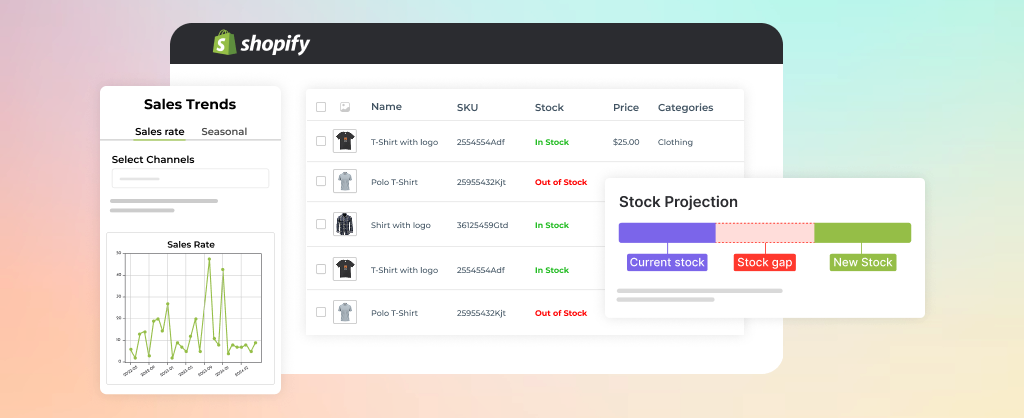
How We Implemented:
- Dynamic Data Sync: Fetched AI-generated sales forecasts and inventory calculations (safety stock, reorder points) in real-time via API.
- Interactive Dashboards: Presented insights using visually intuitive graphs, tables, and charts, including reorder quantity recommendations.
- Stock Risk Indicators: Flagged potential shortages and surplus inventory based on trends, with proactive alerts for critical updates.
- Trend Analysis: Enabled comparison of historical and projected sales patterns, enhanced with stock projection timelines for better planning.
5. Enhancing User Experience with Filters, Alerts, and Insights
To ensure merchants can easily interpret and act on the data, we incorporated powerful UX features that simplify decision-making.

How We Implemented:
- Intelligent Filters: Allowed sorting by product type, timeframe, and demand fluctuations, refined based on merchant feedback for improved usability.
- Proactive Notifications: Sent automated alerts for critical inventory updates, including low stock and anomaly warnings.
- AI-Driven Optimization: Suggested restocking strategies based on sales trends, safety stock, and reorder points, with a planned roadmap for predictive promotion analytics.
- Merchant Support: Integrated a feedback form for user queries, driving iterations like enhanced filters and customizable alerts.
Shopify AI Integration for Inventory Management: Challenges & Solutions
We provide AI integration services that simplify Shopify inventory challenges with automation, forecasting, and real-time control.
1. Handling Large-Scale Data Processing Efficiently
- Shopify stores generate vast amounts of sales and inventory data, making real-time processing and AI-driven forecasting complex.
- We optimized data fetching with batch processing, used Shopify API calls, and leveraged AWS with Celery task queue and Redis for scalable, asynchronous processing to ensure efficient AI inventory management.
2. Ensuring Accurate AI Forecasting & Model Integration
- ML models require high-quality, structured data to make precise demand predictions. Inconsistent or incomplete Shopify data can impact accuracy.
- We implemented data validation, preprocessing, and anomaly detection to flag unusual sales patterns, and logging errors to PostgreSQL. Regular retraining of ARIMA, Exponential Smoothing, and XGBoost models ensured reliable AI inventory management forecasts.
3. Providing a User-Friendly & Actionable Dashboard
- AI-generated insights are only useful if merchants can easily understand and act on them. Complex data can overwhelm users.
- We designed an intuitive UI with visual graphs, filters, proactive alerts, and safety stock/reorder point recommendations, refined via merchant feedback, enabling actionable AI inventory management.
4. Validating AI Model Performance
- “Reliable AI inventory forecasts are essential. Any inaccuracy can result in costly stockouts or excessive overstocking.
- We validated forecasts with real Shopify store data, achieving a Mean Absolute Error Percentage (MAE%) below 10% for key SKUs, and planned future enhancements like predictive promotion analytics to improve AI inventory management.
By proactively tackling inventory challenges, we developed a seamless, AI-integrated Shopify app that optimizes stock management.
Other Key Areas That Can Benefit from Shopify AI Integration
AI integration in Shopify goes beyond inventory management, with 91.5% of leading businesses investing in AI to enhance customer experience, marketing automation, and operational efficiency. Here are additional key areas where it can drive significant improvements.
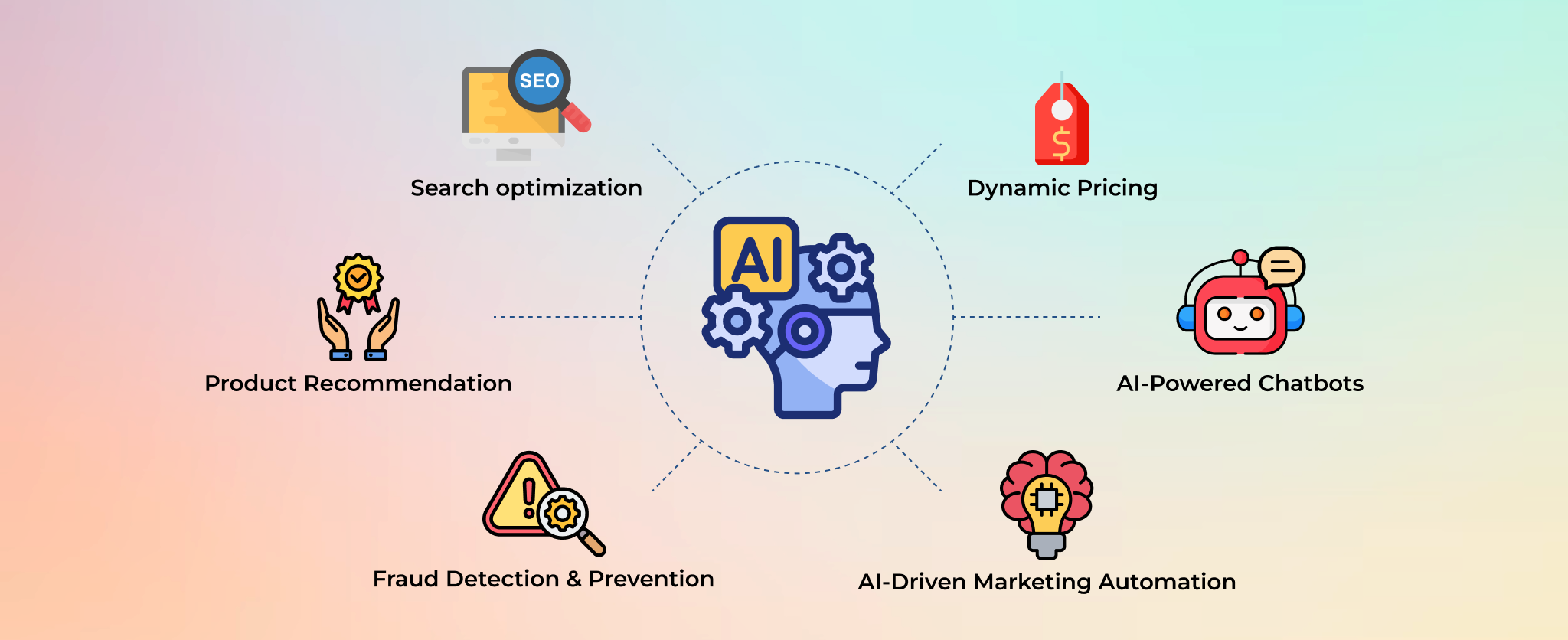
Frequently Asked Questions
Ans: An AI-driven approach eliminates manual errors, offering real-time, data-backed insights for smarter inventory management. With predictive analytics, including demand forecasting and anomaly detection, AI optimizes stock levels and prevents discrepancies for greater accuracy. Ready to transform your inventory management? Hire Shopify developers at TBI to leverage expert solutions.
Ans: AI-integrated inventory management tools use encrypted API connections and secure cloud storage to ensure your Shopify store’s data is protected and remains confidential.
Ready to streamline your inventory securely? Talk to our AI integration experts now!
Ans: The expense of developing a Shopify AI integration app varies based on the complexity of desired features and development resources.
Schedule a consultation & get a custom quote for your project!
Ans: Yes, the AI-powered inventory management app seamlessly connects with Shopify via APIs, pulling real-time data on sales, stock, and trends to provide actionable insights without disrupting your workflow.
Looking to integrate your existing setup? Let’s Talk
Ans: Developing a Shopify AI-integrated inventory management app typically takes 4-6 weeks, but this can vary based on custom features, project scope, and scalability needs.
Contact us for a personalized timeline estimate.
Conclusion
Leveraging AI for inventory management is essential for Shopify merchants aiming to streamline operations, minimize stock issues, and drive data-backed decision-making. Implementing AI-powered forecasting and automation ensures efficiency, accuracy, and long-term business growth.
At The Brihaspati Infotech, our expert developers specialize in building Shopify AI integration apps tailored to your unique business needs. From predictive analytics to seamless Shopify store integration, we help merchants unlock the full potential of AI-driven inventory management.
Ready to optimize your Shopify store with AI? Contact us today and take the next step toward a smarter inventory management journey.
Stay Tuned for Latest Updates
Fill out the form to subscribe to our newsletter





